( #Blogaday 30/365 )
There’s a wedding coming up.. a friend’s son is
to be married and I want to make something really nice and different for her
and yet something that can be used. So
after battling through several ideas, I’ve decided to make this small set of exquisite
doilies for her. Look at these photographs that inspired me.. how can you resist this, right?
Thank you for joining me.
In case you have just joined me, know that you can access all of my earlier creations by checking under ‘categories’ on the right hand side of this blog under “Labels”. Then, for your convenience, follow me here or on Facebook, You Tube, Pinterest, Twitter or Instagram.
Check out all my social media handles at the bottom of this blog
Oh, and may I add that the fastest way to find any of my blogs is via Pinterest.
All my blogs can be printed. Find the printer friendly (green) link at the bottom of this blog. You can also hit Control P (or Command P for Mac) on your keyboard, and the blog will go directly to the connected printer.
Remember that you only print if absolutely essential. Save paper – Save Our Earth.
Do remember to add my blog URL when you make and show off your creation.
Just copy the link on the search bar above - that's the blog URL.
To purchase this or similar yarn online, click here to buy your yarns online via Amazon. While you will still pay the same, I may get paid by Amazon as well.
This is a free blog - so do pay it forward for me. Cheers.


Welcome back to the Sweet Nothings Crochet blog
and thanks for joining me once again as we work on this new idea together.
General yarn info : The yarn used today is not specific to this pattern.
You can use any yarn with a suitable hook to make this project to any size.
International yarns : Among the international yarns I have used in this thickness, I’d suggest Aunt Lydia Cotton 10, Aunt Lydia Bamboo-Viscose 10, DMC Petra, Sullivans knitting cotton (Australia), Milford Soft, Hilaza Rustica Eclat , Alize cotton yarn and Alize bamboo yarn.
Difficulty level
: Advanced Skill level.
Abbreviations used :
ch : chain ch-sp : chain space
sp : space rep : Repeat
fsc : Foundation single crochet
dc : Double crochet
Instructions using U.S terminology
Please note that I start all my rows with a ch 1, turning chain for ease.
Please check the top of this blog for easy video tutorials on all stitches used in today's pattern. For your convenience there video tutorials through the blog too
Please read through all my notes before you pick up your hook, so you know just where we're heading in our pattern.
In my patterns I work with the principle of stitch count and body measurement.
This means that you need to work the stitch count in pattern, till you get the measurement (length and/or width) that you need for your project.
There are several elements to this doily, so
rather than talk about it, let’s just pick up our hooks and start.
As I’ve mentioned at the start, this is an
Advanced Skill pattern, as the Irish crochet flowers and motifs require a
little extra work. The square motif
start also has two start ideas.
PART 1 : SQUARE MOTIF
Note : The fsc
chain start is always a great way to start, but I did find here that for this
motif maybe a chain start would work too.
So here are two choices for you :
We need to have a start with 40 sts.
You can start any way you wish - i.e. with regular chain, or fsc.
What I have done is work 41 ch, (and then using
that last ch as a turning chain), worked a standing chain-less dc (read in
stitches used above) into the next ch (or 2nd ch from hk)
As per the chart, you will work 46 ch (40
ch being the start row ; 3 ch being the 1st dc, and the last 3 ch
forming the 1st ch-3 sp) ; and then you will work a picot in the 7th
ch from hk and continue with the instructions of Row 1.
Choose your option and start.
Start :
with
40 sts. Turn.
In our very first row, we’ll work in a picot
stitch.
We will use a ch-3 picot which
is (ch 3, sl-st into the 3rd ch from hk).
How to work a picot stitch : Traditionally for a ch-3 picot, you work (ch 3, sl-st in 3rd ch from hook). For a ch-5 picot, you will do (ch 5, sl-st in 5th ch from hook).
Note : Just for a
difference, I’ve worked the individual squares without the picot.
Double Crochet : dc : yo, insert hk into st ; yo (3 lps on hk);
[yo, draw through 2 lps] twice. One dc made.
Chainless start for Double Crochet : I dislike the ch-2 / ch – 3 start, and this is what I do to start my row of dc.
Row 1 :
dc
in the 1st fsc ;
{ (ch 3, sk next 2 fsc, sc + picot in the next
fsc ;
ch 3, sk next 2 fsc, dc in the next fsc) ;
[ch 5, sk next 5 fsc, dc in the next fsc] } ;
rep { to } 2 times ;
dc in the last 3 fsc. Turn.
Row 2 :
dc
in the 1st 4 dc ;
{ (ch 3, sc + picot in the next ch-5 sp ; ch 3,
dc in the next dc) ;
[ch 5, sk next sc +picot, dc in the next dc] } ;
rep { to } 2 times till end. Turn.
Row 3 :
dc
in the 1st dc ;
{ (ch 3, sc + picot in the next ch-5 sp ; ch 3, dc
in the next dc) ;
[ch 5, sk sc + picot, dc in the next dc] } ;
rep { to } once ;
rep (to) once ;
ch 2, sk next sc + picot, 3 dc in the next ch-3
sp ;
dc in the next dc ;
ch 2, sk next 2 dc, dc in the last dc. Turn.
Row 4 :
dc
in the 1st dc ; ch 2, dc in the next dc ;
ch 2, sk next 2 dc, dc in the next dc ;
2 dc in the next ch-2 sp ; dc in the next dc ;
{ [ch 5, sk next sc +picot, dc in the next
dc] ;
(ch 3, sc + picot in the next ch-5 sp ; ch 3, dc
in the next dc) } ;
rep { to } once ;
rep [to] once.
Turn.
Row 5 :
dc
in the 1st dc ;
{ (ch 3, sc + picot in the next ch-5 sp ; ch 3,
dc in the next dc) ;
[ch 5, sk sc + picot, dc in the next dc] } ;
rep { to } once ;
ch 2, 3 dc in the next ch-5 sp ; dc in the next
dc ;
ch 2, sk next 2 dc, dc in the next dc ;
< ch 2, dc in the next dc > ;
rep < to > once. Turn.
Row 6 :
dc
in the 1st dc ;
2 dc in the ch-2 sp ; dc in the next dc ;
< ch 2, dc in the next dc > ;
rep < to > once ;
ch 2, sk next 2 dc, dc in the next dc ;
2 dc in the next ch-2 sp ; dc in the next dc
;
{ (ch 3, sc + picot in the next ch-5 sp ; ch 3,
dc in the next dc) ;
[ch 5, sk next sc +picot, dc in the next dc] } ;
rep { to } once till end. Turn.
Row 7 :
dc
in the 1st dc ;
{ (ch 3, sc + picot in the next ch-5 sp ; ch 3,
dc in the next dc) ;
[ch 5, sk sc + picot, dc in the next dc] } ;
rep (to) once ;
ch 2, sk sc and picot, 3 dc in the next ch-3 sp
; dc in the next dc ;
ch 2, sk next 2 dc, dc in the next dc ;
< ch 2, dc in the next dc > ;
rep < to > once ;
2 dc in the next ch-2 sp ; dc in the next dc ;
ch 2, sk next 2 dc, dc in the last dc. Turn.
Row 8 :
dc
in the 1st dc ;
< ch 2, dc in the next dc > ;
ch 2, sk next 2 dc, dc in the next dc ;
2 dc in the ch-2 sp ; dc in the next dc ;
rep < to > 2 times ;
ch 2, sk next 2 dc, dc in the next dc ;
2 dc in the next ch-2 sp ; dc in the next dc
;
{ [ch 5, sk next sc +picot, dc in the next dc] ;
(ch 3, sc + picot in the next ch-5 sp ; ch 3, dc
in the next dc) } ;
rep [to] once.
Turn.
Row 9 :
dc
in the 1st dc ;
{ (ch 3, sc + picot in the next ch-5 sp ; ch 3,
dc in the next dc) ;
[ch 5, sk sc + picot, dc in the next dc] } ;
ch 2, 3 dc in the next ch-5 sp ; dc in the next
dc ;
ch 2, sk next 2 dc, dc in the next dc ;
< ch 2, dc in the next dc > ;
rep < to > once ;
2 dc in the next ch-2 sp ; dc in the next dc ;
ch 2, sk next 2 dc, dc in the next dc ;
rep <
to > till end. Turn.
Row 10 :
dc
in the 1st dc ;
2 dc in the next ch-2 sp ; dc in the next dc
;
< ch 2, dc in the next dc > ;
rep < to > once ;
ch 2, sk next 2 dc, dc in the next dc ;
2 dc in the ch-2 sp ; dc in the next dc ;
rep < to > 2 times ;
ch 2, sk next 2 dc, dc in the next dc ;
2 dc in the next ch-2 sp ; dc in the next dc
;
{ (ch 3, sc + picot in the next ch-5 sp ; ch 3,
dc in the next dc) ;
[ch 5, sk next sc +picot, dc in the next dc] } ;
Turn.
Row 11 :
dc
in the 1st dc ;
(ch 3, sc + picot in the next ch-5 sp ; ch 3, dc
in the next dc) ;
ch 2, sk next sc and picot, 3 dc in the next ch-3
sp ; dc in the next dc ;
ch 2, sk next 2 dc, dc in the next dc ;
< ch 2, dc in the next dc > ;
rep < to > once ;
2 dc in the next ch-2 sp ; dc in the next dc ;
ch 2, sk next 2 dc, dc in the next dc ;
rep < to > 2 times ;
2 dc in the next ch-2 sp ; dc in the next dc ;
ch 2, sk next 2 dc, dc in the last dc. Turn.
Row 12 :
dc
in the 1st dc ;
< ch 2, dc in the next dc > ;
ch 2, sk next 2 dc, dc in the next dc ;
2 dc in the next ch-2 sp ; dc in the next dc
;
{ rep < to > 2 times ;
ch 2, sk next 2 dc, dc in the next dc ;
2 dc in the next ch-2 sp ; dc in the next dc }
;
rep { to } once ;
[ch 5, sk next sc + picot, dc in the next
dc] ; Turn.
Row 13 :
dc
in the 1st dc ;
5 dc in the next ch-5 sp ;
{ ch 2, sk next 2 dc, dc in the next dc ;
< ch 2, dc in the next dc > ;
rep < to
> once ;
2 dc in the next ch-2 sp ; dc in the next dc } ;
rep { to } once ;
ch 2, sk next 2 dc, dc in the next dc ;
rep < to > 2 times . Turn.
Note : This basically finishes one
square motif.
I have decided to first
run a round of sc all around my motif mainly because I am using a really
fine lacy thread and I would like a little stiffness for the edge.
If you decide to run a round as well, then work
3 sc in each corner (for a good neat turn) and work 2 sc in each vertical dc
bar along two sides of your motif. In
each ch along the other two sides of your motif, you will, of course, work 1 sc
in each st.
Basically count the number of stitches. We started with a row of 40 sts, so ensure
you have 40 sts all around plus one stitch extra per corner to turn
neatly.
As per the chart, in the last round, we’ll work
a round of ch-3 sps all around the square motif we’ve just made.
So we’re at one corner, and we’ll start right
here.
Round 14 :
ch
3, sc in the same corner dc ;
{ (ch 3, sc in the next dc) ;
rep (to) 2 times ;
ch 3, sk next 2 dc, sc in the next dc } ;
rep { to } 2 times ;
ch 3, sk next 2
dc, sc in the next corner ;
ch 3, sc in the same corner ;
Now we will turn our work 90˚ and work
down the motif, along the vertical dc bars and work an sc in the space between
2 dc stitches ;
*ch 3, sk the vertical bar of the next dc, sc in
the next st* ;
rep *to* till the next corner ; ch 3, sc in the same
corner ;
Now once again, we will turn our work
90˚ and work along the other side of the start fsc row of the motif ;
< ch 3, sk next 2 fsc, sc in the next st >
;
rep < to > till the next corner ;
ch 3, sc in the same corner ;
Now we will turn our work 90˚ for the
last side, and work up the motif, along the vertical dc bars and work an sc in
the space between 2 dc stitches ;
rep *to* till the last corner ;
ch 3, sc in the same
corner.
Fasten off and weave in ends.
PART 2 : ROSE MOTIF (Large)
Start :
with
a magic circle and work 6 sc in that circle.
Pull lightly to close circle. Join with a sl-st to the 1st
sc.
Round 1 :
3
dc in the 1st sc ;
(ch 5, 3 dc in the next sc) ;
rep (to) all around
;
ch 5 and join with a sl-st to the 1st st.
Round 2 :
sl-st
into the 1st ch-5 sp ;
(sc ; hdc ; 4 dc ; hdc ; sc all in the ch-5
sp) ;
* sk 3 dc ; rep (to) once* ;
rep *to* all around
and join with a sl-st to
the 1st st.
We have completed one row of petals for our rose
flower.
For the 2nd row of petals, we will
start with creating a set of ch-5 sps.
For this, we will need to work from behind and under the centre dc of
the 3-dc set from Round 1. You will
work a fpsc (front post single crochet) of sorts around this centre dc and work
the ch-5 off it.
Now the next confusion :
When you finish Round 2, you are at the end of a 3-dc set. So what I’ve done is work ch-1, turn and work
behind and under the centre dc of this same 3-dc set. It *may* be a little difficult and messy, but
it’s going under and the petals will come out of it, so it won’t show.
So this is what I’ve done and you could
well find a neater or better way of getting to the dc. Go for it.
Right.. so we’ve got our work cut out.. let’s
get to it.
Round 3 :
ch
1, and working under the dc of Round 1,
sc around the centre dc of the 1st
3-dc set ;
*ch 5, sk next 2 dc of Round 1, and sc around the next dc* ;
rep
*to* all around
and join with a sl-st to the 1st st.
You have created the base for the 2nd
set of petals.
Round 4 :
sl-st
into the 1st ch-5 sp ;
(sc ; hdc ; 7 dc ; hdc ; sc all in the ch-5
sp) ;
*sk sc ; rep (to) in the next ch-5 sp* ;
rep
*to* all around
and join with a sl-st to the 1st st.
We have completed our 2nd row of
petals for our rose flower.
Once again, we will need to work our chain base
for the final row of petals.
This time,
will work from behind and under the sc.
Round 5 :
ch
1, and working under and around the sc of Round 3 ;
*ch 6, and sc around the
next sc* ;
rep *to* all around
and join with a sl-st to the 1st st.
You have created the base for the final set of
petals.
Round 6 :
sl-st
into the 1st ch-6 sp ;
(sc ; hdc ; 10 dc ; hdc ; sc all in the ch-6
sp) ;
*sk sc ; rep (to) in the next ch-6 sp* ;
rep
*to* all around
and join with a sl-st to the 1st st.
Fasten off and leave a tail to attach.
PART 3 : LEAVES + STEM MOTIF
Our leaf is worked off a chain. We will start with a chain, and work one set
of leaves on one side, then at the top of the leaf stalk, we’ll turn
around and come back down the same chain to work leaves on the other side of
it.
Half Double Crochet : Hdc : yo, insert hk into st ; yo (3 lps on hk) ;
yo, draw through all 3 lps. One hdc made.
Chainless start for Half Double Crochet : I dislike the ch-2 start, and this is what I do to start my row of hdc. Check out the video at
https://youtu.be/lWXpl1KdbZ8
Start :
with
12 + 7 ch = 19 ch
(The reason I say it this way is so that you remember we’re
working our first leaf on the last 7 ch.
1st leaf : {ch 1, Turn
(the ch 1 here being the turning ch, and we’ll work back on the chains just
made)
sc in the 2nd ch and in the next 6 ch
;
Turn ;
(we’ll
work back on the sc just made)
sl-st in the 1st sc ; hdc in the next
ch ;
dc in the next 3 ch ; hdc in the next ch ; sc in the next ch ;
3 sc in the turning chain at the end of the leaf
;
Turn ;
(we’ll
work around the end of the leaf and along the back on the sc made for lower
part of leaf)
sc in the 1st sc ; hdc in the next ch
;
dc in the next 3 ch ; hdc in the next ch ; sl-st in the next ch } ;
Leaves 2 & 3 : For the next
leaf , start with ch 12 and then rep instructions of Leaf 1 from { to }.
Leaves 4 & 5 : After you
complete the 3rd leaf, sl-st down the
5 ch, and then add 7 ch for the next leaf.
You will then rep instructions of Leaf 1 from { to
}.
Last stem part : After you
complete the 5th leaf, sl-st down the
last 12 ch to finish and strengthen the stem bit of our leaf motif.
Fasten off and weave in ends.
PART 4 : ROSE MOTIF (Small)
Rep Rounds 1 – 4 from Rose Motif (Large) for
this small rose motif.
PART 5 : LEAF MOTIF
Our leaf is worked off a chain. We will start with a chain and then work side
to side off this chain, reducing the ‘end stitch’ so that we get this nice
jagged edge of a leaf.
In the finished product, the designer has worked
all through in the back loops only.
However, you could choose to work in the back loops or in the sc full
stitch. Totally up to you. Assuming that you’re working the simpler
single crochet all through, that’s how I’ve written the pattern notes. If you decide to work in back loop, well, you
just work sc-blo where ever you read ‘sc’.
Start :
with
9 fsc. Turn.
Row 1 :
sc
in the 1st fsc and the next 8 fsc till end. Turn
Row 2 :
sc
in the 1st sc and the next 7 sc till end ;
5 sc in the next sc ; Turn
(and working along the other side of the fsc chain),
sc in the next 7 sc. Turn.
Row 3 :
sc
in the 1st sc and the next 8 sc till end ;
3 sc in the next sc ;
Turn,
sc in the next 8 sc. Turn.
Row 4 :
sc
in the 1st sc and the next 8 sc till end ;
3 sc in the next sc ;
Turn,
sc in the next 7 sc. Turn.
Row 5 :
sc
in the 1st sc and the next 7 sc till end ;
3 sc in the next sc ;
Turn,
sc in the next 8 sc. Turn.
Row 6 :
sc
in the 1st sc and the next 8 sc till end ;
3 sc in the next sc ;
Turn
(, sc in the next 7 sc. Turn.
Row 7 :
sc
in the 1st sc and the next 7 sc till end ;
3 sc in the next sc ;
Turn,
sc in the next 7 sc. Turn.
Row 8 :
sc
in the 1st sc and the next 6 sc till end ;
3 sc in the next sc ;
Turn,
sc in the next 6 sc. Turn.
Row 9 :
sc
in the 1st sc and the next 6 sc till end ;
3 sc in the next sc ;
Turn,
sc in the next 6 sc. Turn.
PART 6 : FINISHING
Check the diagram below to see how you need to assemble
all your pieces together to get the super end result.
Ensure that you block this properly,
especially if you too have used the fine lace yarn that I have.
Enjoyed this ?? I sure did.. Come back right here for more freebie patterns
Remember to share this blog post when you share your photos with me on Facebook. I’d love to feature your photos on my FB page. Cheers.
If you're visiting me here for the first time, and have liked the experience, do add me to your mailing list (for your convenience) , and all my future free patterns will come straight to your mail box.
I’d appreciate if you could credit my blog (and link the original pattern link) when you make your own creation. Thanks.
Have a great day and see you soon.
I have a few other miscellaneous projects I’ve
made
.. and some interesting home use miscellaneous project pattern ideas...






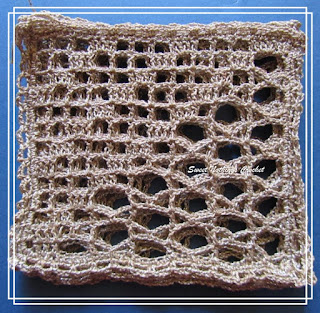
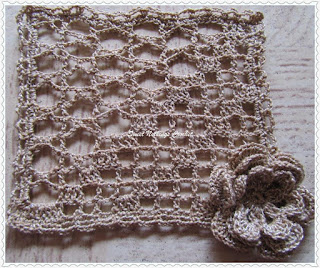











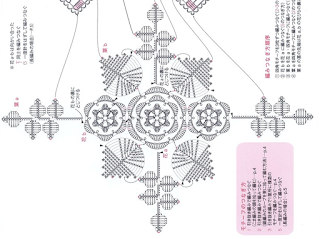
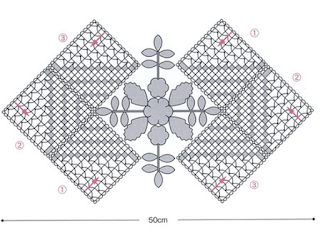












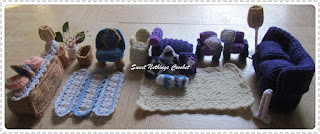











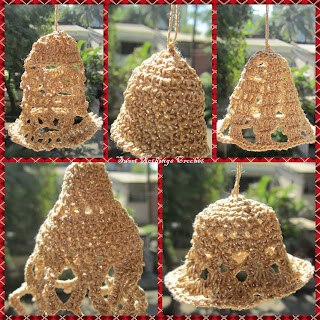

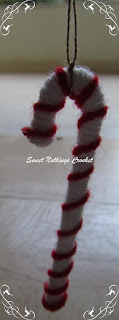
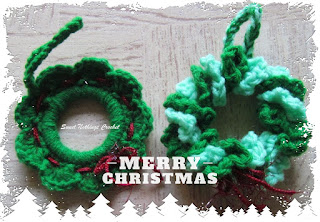



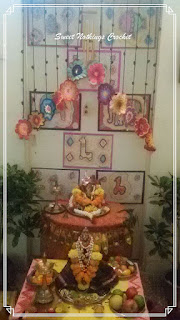



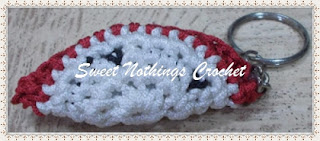

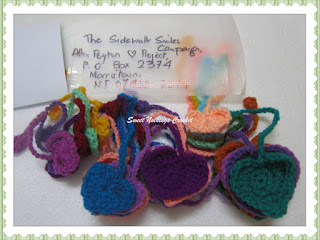

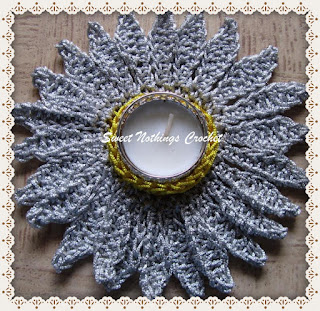
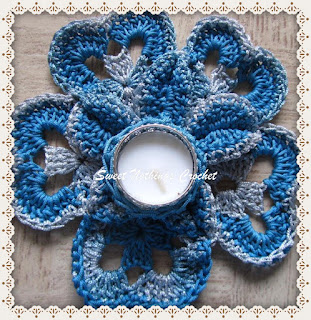






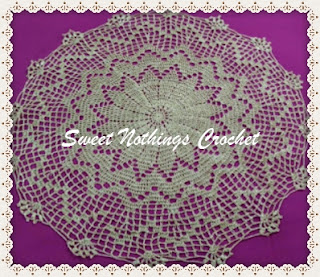






No comments:
Post a Comment
Thanks for taking the time to stop by. Do tell me what you think. Cheers